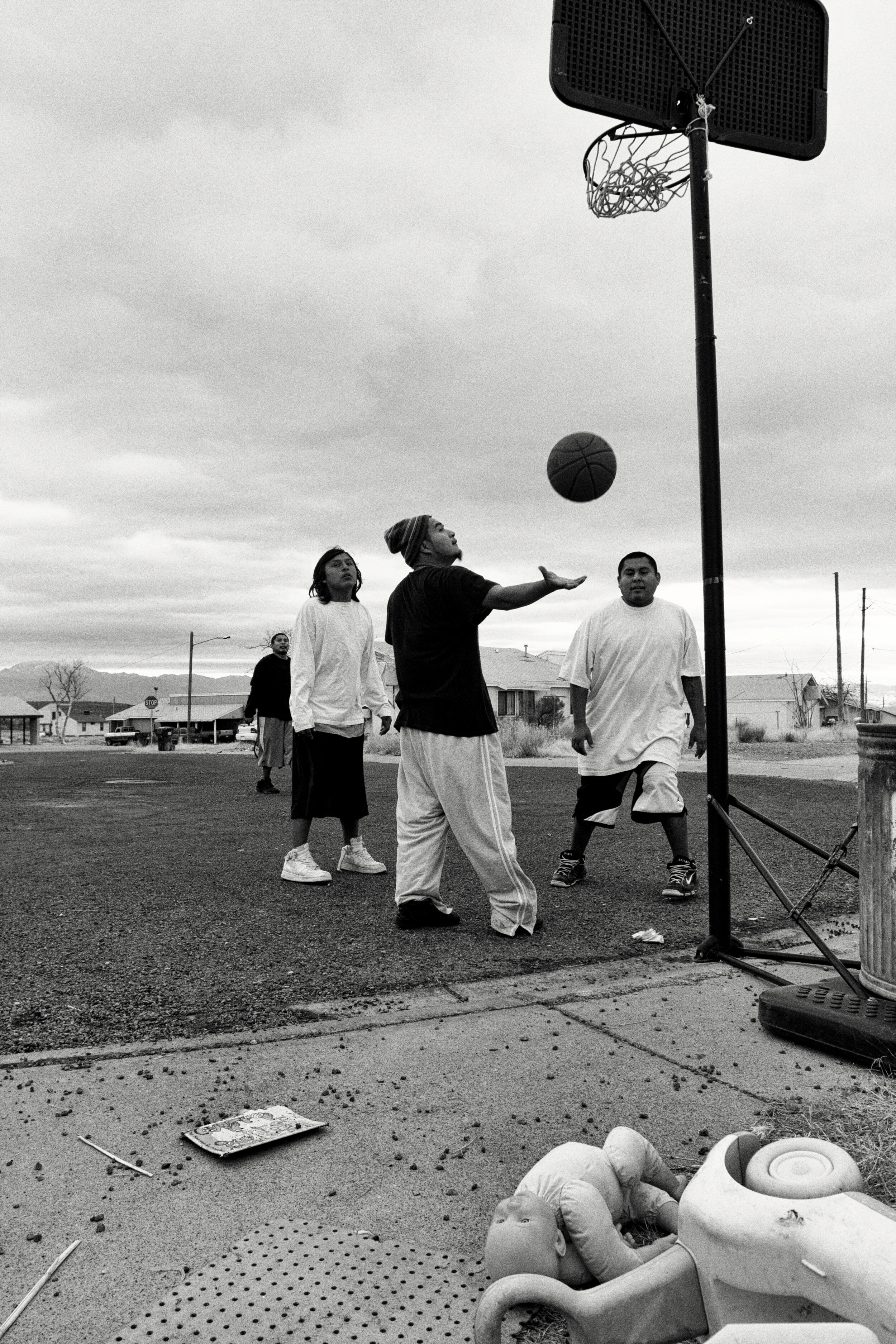San Carlos apache reservation, arizona, 2009
The San Carlos Apache Reservation was the second reservation that Jay and I visited on our year-long Sabbatical (See the Pamunkey text for more details about our RV trip across America). We didn't plan to stay for two months, but once we learned about the commemoration events in February, we decided to extend our stay so we could witness this meaningful event. We were honored to be there.
The photographs here are from two months at the reservation. We were staying in an RV park just a few miles away. Our mission with this project was to show the lives of contemporary Native Americans.
Jay wrote several pieces for his blog, the sad red earth, in December 2008, January and February 2009, but the piece below was written about the commemoration.
Commemorating the Apache Experience
by A. Jay Adler on February 21, 2009
They came from the Jicarilla Apache Tribe. They came from the Tonto Apache. The White Mountain Apache were there, and the Yavapai-Apache, and the Camp Verde Apache. They came from the San Carlos Apache Tribe. Under a grey, marbled dome of sky and the cross-hatched rays of light that sometimes broke through them, amid a chill wind and drizzle on a promontory overlooking San Carlos Lake, the Apache Nations assembled within a mountain-ringed horizon to honor the victims of atrocious conquest and to seek a new beginning.
By the time Coolidge Dam was completed in 1928, it had covered over not only the land beneath the lake it created from the waters of the Gila River, but an abject and awful past as well. It buried beneath the lake’s luminous beauty a history of subjugation and suffering. It washed that history from the memory not only of the conquerors, who barely considered what they had done, but from the full recollection, too, of the descendants of those who suffered.
It was below the site of the commemoration, beneath the waters of the lake, that the original settlement of the San Carlos Apache Reservation was made – Old San Carlos. It was there that the members of varied Apache tribes had been compelled to march from their more native grounds – their own “Trail of Tears,” with their own losses along the way – and to settle under the rule of the U.S. Army. It is there during droughts, when waters recede, that the foundations of the old buildings are once more revealed, as well as the graves of those who died. History provides the accounts of the conditions under which they lived, the final humiliation after the land and the freedom taken.
The legacy of cultural disconnection and loss has been long. Some of the tribal leaders who spoke to those assembled, on February 17, 2009, took note of their own rise from personal depths, their rescue from hopelessness and alcoholism.
When San Carlos Tribal Chairman Wendlser Nosie and the San Carlos Tribal Council chose the hundredth anniversary of Geronimo’s death, after twenty-three years in captivity, as the date on which to mark this history, it was not without controversy. Geronimo is controversial. San Carlos historian Dale Miles examined some of the controversy in an article in the local Apache Moccasin newspaper. Geronimo, Miles reasoned, needs to be considered in the context of the times in which he lived: a violent era of raids and counter-raids that came with two hundred years of Spanish and Mexican encroachment on Apache land, twenty-five years more of the same from the U.S., and the murder of Geronimo’s wife and children by the Mexican Army. In the end, with defeat and captivity for the Apache assured, Geronimo remained as the last actor and symbol of defiance and relentless resistance.
San Carlos Apache Tribal Chairman Wendsler Nosie
When Nosie spoke, he acknowledged the controversy, and the fact that division and dispute among the Apache had been one of the sorry legacies of their conquest. He reminded the audience that the day was about much more than Geronimo. It was, he said, about honoring the past and the ancestors who had fought and suffered. It was about acknowledging, but then moving passed, this history – about healing and seeking a new path, in unity, into the future. The monument created and unveiled for the occasion revealed an Apache family, and in the middle of it, a headstone representing those who died.
The Reverend Dr. John Mendez, Emmanuel Baptist Church, Winston-Salem, NC
One of the final speakers was Dr. John Mendez, Pastor of Emmanuel Baptist Church in Winston-Salem, North Carolina. Mendez spoke of an advantage Native Americans have over African-Americans, who were brought to the continent involuntarily, and who, in most cases, do not know their origins – their tribes. Native Americans, he said, are not another ethnic minority; they are the original inhabitants of the land. Apaches know their land, their culture, their history and tribe. These, Mendez suggested, are gifts of circumstance to be utilized. Then he offered a fable – the story of an eagle caged so long among chickens that it had forgotten its eagle nature. Repeated efforts to lead the eagle from its cage and to remind the bird of its true character had failed. In one final attempt, it was taken to a mountain top , its natural home, and released from the cage, when at last it spread its wings and flew, like an eagle.








































































